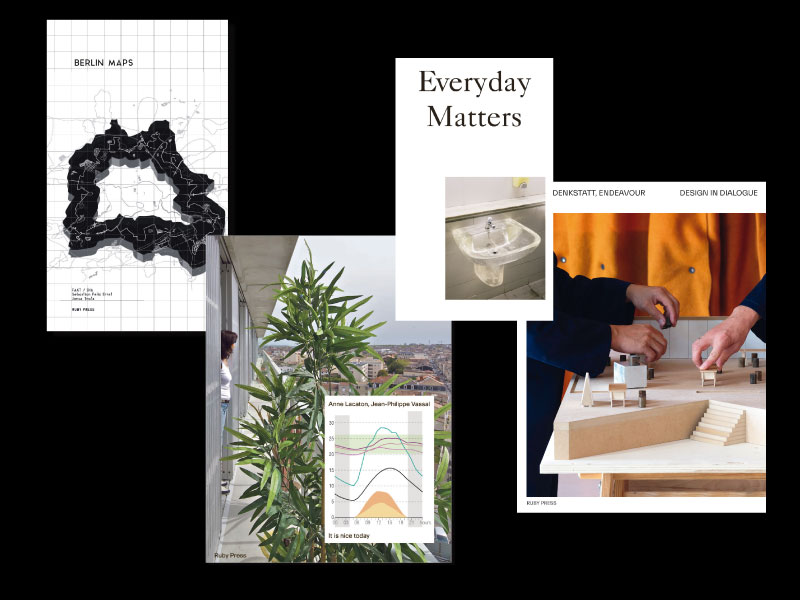What’s next?
A preview of our spring titles
Berlin Maps by Sebastian Felix Ernst and Jonas Tratz/Fakt is an atlas of the special, strange, or undiscovered phenomena of the German capital: natural and artificial mountains, escape tunnels and enclaves, swamps and moors, the four walls, and much more. In 18 chapters the book presents architectural geography, urban history, political upheavals, scenic spaces, and curiosities with relish in newly drawn maps and detailed illustrations.
Everyday Matters edited by Vanessa Grossman and Ciro Miguel chronicles how the realm of the quotidian has influenced both the practical and theoretical domains of architecture and urbanism by triggering a new ethic and aesthetic of humbleness. Rather than evidence of inaction or a lack of will, architects claim this approach can make design relevant for everyone as a shared concern. With a foreword by Beatriz Colomina and Mark Wigley. Contributions by Anna Heringer, Andrés Jaque, Anna Puigjaner, Charlotte Malterre-Barthes, Markus Miessen and many others.
In Design in Dialogue by Seppe De Blust, Freek Persyn, and Charlotte Schaeben advocate openness and dialogue in the design process. The first part of the book investigates the work of 51N4E, Denkstatt, and endeavour. Digesting the firms’ work and probing for patterns, the book seeks to explain the craft and organizational processes that drive this design approach. A second part examines this “design in dialogue” approach in a wide range of European architecture firms and their projects—not as a new methodology to study, but as a liberating attitude to share, cherish, and develop.
And finally It is nice today, a book edited by Anne Lacaton and Jean-Philipe Vassal on winter gardens and their potential for architecture. The projects by the French duo integrate outdoor areas modeled on the winter garden—spaces that are open to the climate, transparent, and permeable. This book is the first scientific study of the thermal performance of winter gardens in residential construction, showing their potential and effectiveness via selected projects of Lacaton&Vassal: from their first house, Latapie, to a recently completed apartment and office tower in Geneva. Complementary essays trace the historical development of conservatories, and the architects share their personal motivations for exploring this particular typology and their long experience with it.
For more information check out our catalog for spring 2021

